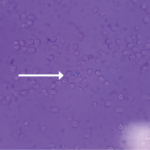Finally, Dr. Abhishek noted several practical limitations for using presence of CPPD crystals in synovial fluid as the gold standard for diagnosis. These issues include low sensitivity with a high false-negative rate, variability between observers (i.e., two individuals evaluating the same synovial fluid may not always concur as to the presence or absence of CPPD crystals), the crystals themselves can be hard to detect due to small size and absent or weak positive birefringence under polarized light, and obtaining synovial fluid is sometimes difficult, especially from small joints.
Thanks to Dr. Tedeschi, Dr. Abhishek and collaborators, the future of CPPD disease diagnosis and research looks as striking as a band of chondrocalcinosis on an X-ray.
Jason Liebowitz, MD, completed his fellowship in rheumatology at Johns Hopkins University, Baltimore, where he also earned his medical degree. He is currently in practice with Skylands Medical Group, N.J.
References
- Tedeschi SK, Pascart T, Latourte A, et al. Identifying potential classification criteria for calcium pyrophosphate deposition disease: Item generation and item reduction. Arthritis Care Res (Hoboken). 2022 Oct;74(10):1649–1658.
- Tedeschi SK, Becce F, Pascart T, et al. Imaging features of calcium pyrophosphate deposition (CPPD) disease: Consensus definitions from an international multidisciplinary working group. Arthritis Care Res (Hoboken). 2022 Apr 19. Online ahead of print.

